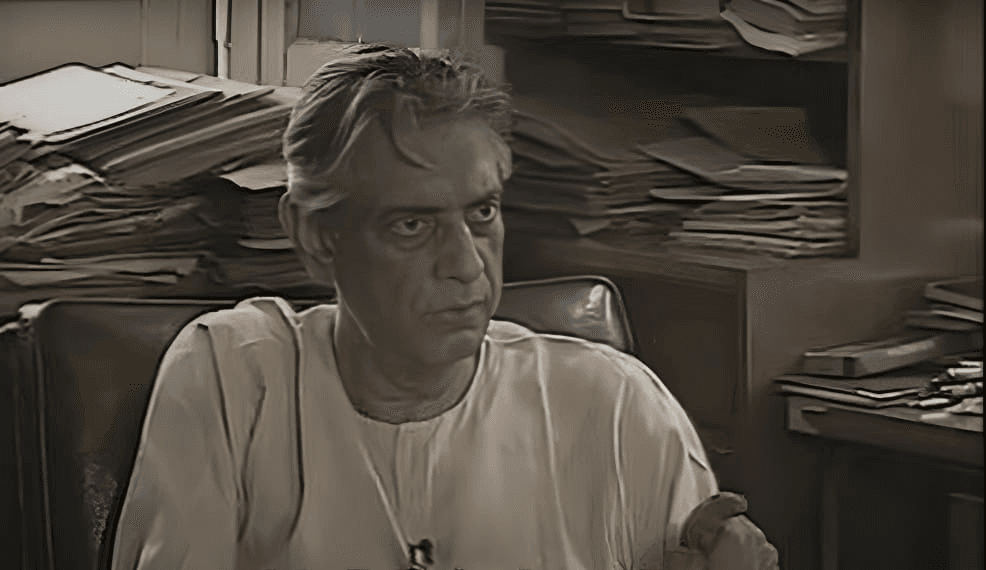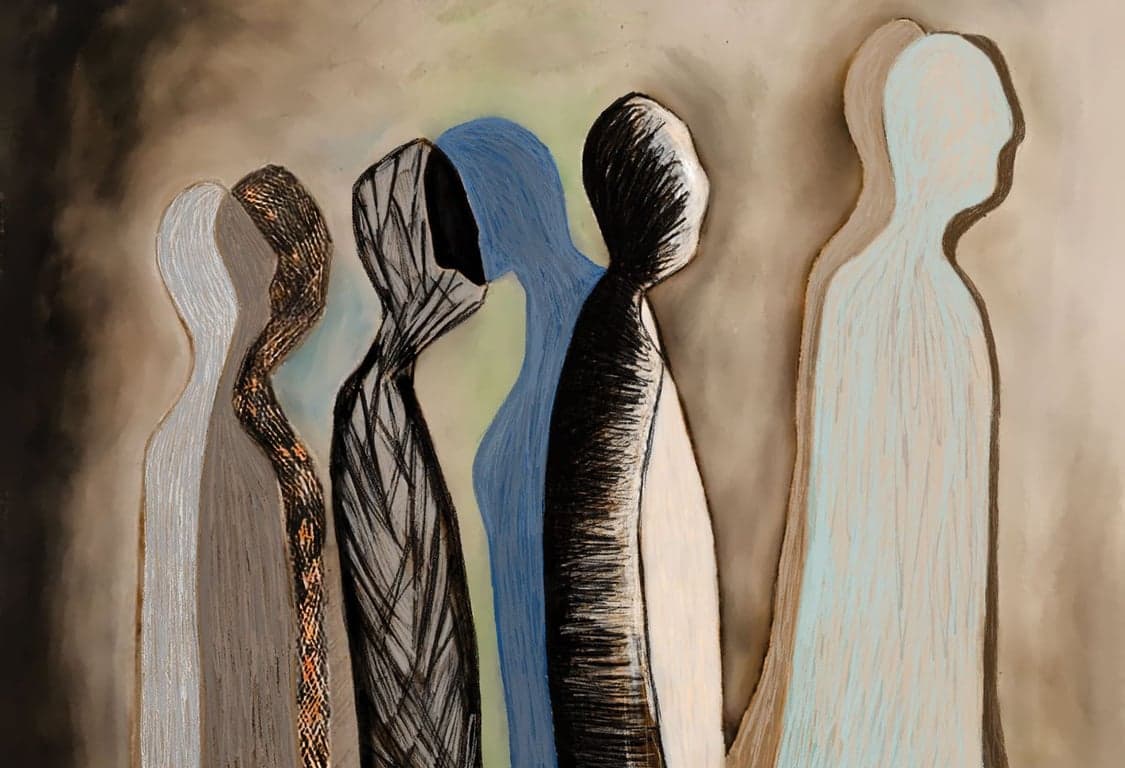 The existence of the present and the probable prospects of future, is not only dependent on the modern technological advancements that are brought into a region for the people's benefit, but also it has a fair share of dependence on the core cultural and civilizational values that fuels development with the existing pride and beliefs that have been passed down from one generation to the other.
The existence of the present and the probable prospects of future, is not only dependent on the modern technological advancements that are brought into a region for the people's benefit, but also it has a fair share of dependence on the core cultural and civilizational values that fuels development with the existing pride and beliefs that have been passed down from one generation to the other.
Now what if there is a neglect in preserving a uniquely rich cultural identity of a region – one whose root traces back to the Ancient Treta-Yuga which is now on the verge of becoming a civilisational story fading into silence?
“Mithila – The Cradle Of Wisdom” a living testimony to India’s ancient civilisational and identity. Despite its rich cultural legacy, it is being neglected, and affected by floods, unemployment, fading due to poor policies of the administration and lack of human engagement.
A sacred land that has nurtured Vedic wisdom, philosophical dialogues, and a rich artistic legacy for centuries by providing scholars excelling in different fields, and also having its mention in the Ramayana as the birthplace of Goddess Sita, to its contribution to classical Indian philosophy and aesthetics, Mithila remains a soul-stirring reminder of India’s cultural continuity. But while its traditions continue to echo through songs, rituals, and folk art, the region itself stands at a fragile crossroads.
Economic and Development Neglect in Mithila
Mithila, for years, has had it's historical and cultural significance in the Indian Society. But it still continues to face systemic economic neglect, leading to substantial developmental disparities between the region and the rest of Bihar. The economic marginalization can easily be spotted by the spark contrast in the per capita income, amount of industrialization and the level of public investment when compared to more developed districts like Patna and Gaya. The economic parity seen here is clearly a broader violation of the principle of regional equity that has been promised to be followed by the government in power. This economic disparity has let to increased out-mitigation, as the individuals living in the region are forced to seek employment in nearby metropolitan cities due to the region's inability to provide sustainable livelihoods. The absence of affirmative policy measures to bridge this gap can be construed as a failure on the part of the state to uphold the constitutional obligation.
Now, what is to be noted is that a significant aspect of Mithila's developmental stagnation is the acute deficiency in infrastructure, which has directly contributed to the underperformance in the region's economy. The lack of adequate roadway and railway connectivity has heavily impeded trade and mobility. This has let to a violation of a constitutional directive under Article 39(c) to ensure that economic resources are distributed to serve the common good. Similarly, the region's underdeveloped health and study infra has underscored a failure in the state's duty to
guarantee justice as mandated under Article 41. Neglect in industrial development of Mithila has worsened the situation, there has been a heavy concern laid within the state's compliance to its principles.
The state’s continued failure to implement newly brought forward high dam projects and river linking schemes shows a pattern of environmental and developmental neglect by the state. This failure could have serious legal consequences. The mismanagement of the Kosi and Kamla rivers causes frequent floods in Mithila, leading to mass displacement, destruction of property, and loss of life. This is seen by many as a violation of the right to life under Article 21 of the Constitution. The KL Rao project, proposed in the 1970s to control floods and improve irrigation, was abandoned due to bureaucratic and political delays. The high dam at Barahkshetra in Nepal, meant to provide long term flood control, remains stalled because of weak diplomatic efforts and policy failures. The Kosi Mechi river linking project is part of India’s national river linking plans, yet it has been ignored. This neglect denies the people of Mithila their right to a dignified standard of living. The Supreme Court of India has repeatedly ruled that the state must prevent large scale environmental and developmental disasters. However, Mithila continues to suffer due to government inaction.
The government needs to develop a comprehensive development strategy as a priority act. It must include special economic incentives, industrial developmental plans and robust flood management initiatives. The economic and developmental neglect can not be ignored any longer. The problem is going to worsen with time. Immediate action is required.
The Erosion of Maithili Language and Culture
The language at the heart of Mithila’s culture is Maithili, one of India’s oldest languages, with a rich literary and cultural heritage. However, it has long faced systemic suppression. Administrative policies have gradually diminished its presence, and linguistic and cultural shifts have marginalized Maithili speakers. Additionally, underfunding by the Bihar government has led to economic disparities in the Mithila region, threatening the livelihoods of Maithils. This bias also hinders the preservation and growth of Maithili culture.
A major concern is the misrepresentation of Maithili by the Bihar government. While the Central Government officially recognizes four Maithili dialects, the Bihar government treats them as separate languages, weakening the collective identity of Maithili speakers. This categorization reduces linguistic strength and limits the support Maithili receives. The sidelining of Maithili is also evident in how government websites, public portals, and legal documents prioritize Hindi and English, leaving little to no representation for Maithili.
Another issue is the increasing replacement of Maithili by Hindi and Bhojpuri in official communication. Public signboards and hoardings increasingly use Hindi, sidelining Maithili in its own region. This shift not only reduces Maithili’s visibility but also discourages younger generations from learning and using it in formal spaces. However, events like the Mithila Mahotsav, an annual festival celebrating Maithili culture, have created momentum for initiatives to make Maithili a language of education and livelihood.
Renaming key cultural elements has further distanced Maithili heritage from its roots. The renowned Mithila Painting, historically tied to the region’s identity, is now widely referred to as Madhubani Painting, diminishing its broader cultural context. This change makes it harder for Mithila’s artists to gain government support, while commercial exploitation of their work often benefits non-Maithili entities. Similarly, attempts to rename Mithila Makhan erase its regional specificity and downplay Mithila’s contributions to various fields. These changes are not just linguistic shifts but a gradual disassociation of Maithili culture from its historical foundations.
Another major loss is the removal of the Tirhuta script, also known as Mithilakshar, from public spaces. Once a fundamental part of Mithila’s literary tradition, Tirhuta has disappeared from railway stations, government signboards, and official documents. This lack of institutional support has made it increasingly difficult for Maithili speakers to preserve and pass down their script.
Beyond language, Maithili’s folk traditions are also fading. Many traditional dance forms, such as Dhuno Naach, are rarely performed today due to a lack of preservation efforts. These cultural expressions are losing relevance and, without active promotion, risk fading out completely.
Maithili heritage sites have also been consistently overlooked. Architectural wonders such as Rajnagar Palace and Darbhanga Fort receive minimal conservation efforts. Even Punaura Dham, believed to be the birthplace of Goddess Sita, lacks the recognition and upkeep that similar religious sites in other parts of India receive.
Unique natural landmarks such as Ox Bow Lake, Kanwar Lake, and those in Begusarai remain largely unacknowledged as well.
The cumulative effect of these policies and practices is a steady erosion of Maithili’s linguistic and cultural identity. It is obvious that the Bihar government must play a crucial role in bringing Maithili culture to the limelight, but it also goes without saying that measures to restore its status in governance, education, and daily life need to be undertaken by the citizens as well.
The Intellectuality of Mithila
Ancient Mithila: Wisdom from the Age of the Ramayana
The Ramayana speaks of King Janaka’s court in Mithila, where scholars and philosophers gathered to discuss the deepest truths of existence.The Brihadaranyaka Upanishad records the legendary Bahudakshina Yajna, a grand scholarly assembly where Brahmins from across India engaged in Shastrartha, a philosophical discourse under Janaka’s patronage.
 Philosophical Conversation between Ashtavakra and the King Janaka of Mithila - Ashtavakra Gita
Philosophical Conversation between Ashtavakra and the King Janaka of Mithila - Ashtavakra Gita
This was no ordinary kingdom—Mithila was a land where sages and sovereigns pursued knowledge with equal passion. While Ashtavakra (literally meaning “one with eight bends or deformities”) taught Janaka the metaphysical nature of existence and the meaning of individual freedom in the Ashtavakra Gita, Yajnavalkya, expounded Brahman Vidya in the same court.
 Yajnavalkya teaches Brahma Vidya to King Janaka in his ashram in Mithila
Yajnavalkya teaches Brahma Vidya to King Janaka in his ashram in Mithila
The brilliant Gargi Vachaknavi, one of the few women philosophers of ancient India, honoured as one of the Navaratnas in the court of King Janaka, challenged Yajnavalkya in a famous debate on the origin of existence. Maitreyi, another profound thinker, delved into Advaita Vedanta, questioning the nature of the soul itself.
Maharshi Panchashikha preached Samkhya Shastra to Janaka and wrote 60000 verses on the nature of Matters (Prakriti), the self, the faculties of perception and action and supra normal powers. He taught Janaka about the relation between the body and the soul in the earthly life and after death.
 Sage Panchashikha preaching to the King Janaka
Sage Panchashikha preaching to the King Janaka
Even during the Gupta period, Mithila remained a battleground of ideas, where Mimamsa scholars defended Vedic rituals against Buddhist and Jain critiques. Unlike much of North India, Mithila resisted the cultural disruptions of the Turkic conquests, becoming a sanctuary for Brahmanical scholarship. Here, in the quiet corners of Tols and Pathshalas, students lived with their gurus, memorizing texts and honing their intellects in an unbroken tradition that lasted centuries.
For centuries, Mithila University stood as one of India’s greatest centers of learning, shaping the philosophy of Nyaya Shastra, Tarka Shastra, Mimansa and Sankhya Shastra. Unlike Nalanda and Vikramshila, which fell prey to the attacks by invaders, as a result of being centralized institutions, Mithila’s academic tradition thrived in decentralized gurukuls and ashrams, making it resilient against their destruction. Today, as modern India revives Nalanda, it’s time to ask: Shouldn’t Mithila, with its enduring legacy, be next?
Mithila’s Intellectual Prowess: The science of logic, astronomy and political science.
In the 10th century CE, Udayanacharya advanced Nyaya philosophy by synthesizing the Nyaya and Vaisheshika schools in his magnum opus, Nyayakusumanjali. His academy, located in present-day Mithila, became a pivotal center for logical studies. This work laid the groundwork for Navya Nyaya (New Logic), which emerged in the 13th–14th century CE under Gangesha Upadhyaya, to combat the logic of Buddhist Philosophy, and reduce its influence.
This intellectual legacy was anchored in Nyaya Shastra (literally meaning "science of justice", one of the six orthodox Āstika schools of Hindu philosophy) founded by Aksapada Gautama and later refined by scholars like Gangeśa Upadhyay in Mithila. Between the 12th and 15th centuries, it became a hub for scholars across India.
Even Mughal emperors acknowledged its brilliance- Abul Fazl recorded how Shah Jahan rewarded Mithila’s scholars and poets for their work. One such instance was recorded in the 16th century, when Mithila was emerging as a chief centre for both secular and religious learning when sanskrit scholars from across India traveled to Mithila to delve into Hindu philosophy. One such scholar being Raghunandan Dasa. It is said that Akbar was so impressed by Raghunandan Dasa’s intellect that he gifted him the entire region of Mithila!
Generation after generation, Mithila's scholars perfected the science of the stars, creating works that combined exact calculation with deeper philosophical wisdom, and thus flourished the studies of astronomy and astrology.
In the 11th century, Varunci composed the Bhargavamuhurta, while the 13th century saw Harinatha author both Sanketakakaumudi on astrology and the legal treatise Smritisara. The tradition continued with Dhiresvara's Buddhipradipa for the calculations of auspicious days and nights.
This golden age of scholarship produced numerous luminaries: Haradatta penned Daivajnabandhava and Gatinamamala; Candesvara composed Krtyacintamani on astrological calculations; and Ganapati Thakur, father of the legendary Vidyapati, wrote Bhumibrahamana and Gangabhaktitarangni.
Vidyapati himself contributed Jyotisadarpana, while his contemporaries like Paksadhara wrote Subhodh and Tithicandrika. The scholarly output was meticulously preserved, with Haripati's Vyavaharapradipika surviving in Darbhanga's archives and Madhusudana's Jyotisapradipankura housed in London's India Office Library.
Equally impressive was Mithila's advancement of political science.Chandeshvara Thakur's Rajnītiratnākāra, composed under Karnata patronage, stands as the region's oldest surviving treatise on statecraft and politics.Jyotishwara Thakur's Varnā-Ratnākāra meticulously detailed royal administration, the court life and enumerated 84 essential kingly virtues and 36 combat techniques. Vidyapati's Bibhagasara championed monarchical authority as the main source of law, while legal scholars like Vardhamana and Vacaspati Mishra developed sophisticated frameworks for justice and governance.
What makes Mithila special is how the study of stars and the art of governance were given equal importance. The same civilization that carefully tracked planetary movements also developed sophisticated systems of rule
A Unique Education System
Mithila’s academic culture was intense. Unlike modern universities, where students can simply type out their notes on electronic devices, students at Mithila couldn’t take texts outside the university—knowledge had to be memorized! The minimum study period was 12 years, with an emphasis on self-discipline (danta), patience (titiksha), and restraint (uparata).
The university’s famed Salaka Pariksha (Needle Test) required students to explain any random page pierced by a needle, in order to complete their graduation certificate. The even tougher Sadayantra was a public debate where scholars faced questions from literally anyone on any topic. Success earned titles like Mahamahopadhaya, a mark of supreme scholarship.
Maharaja Mahesha Thakur, the founder of the Darbhanga Raj, a jurist, astronomer, and philosopher himself, instituted the Dhaut Pariksha—a rigorous examination system to assess scholars in his kingdom. Those who excelled in these Shastrartha, the scriptural debates were honored with the prestigious Dhaut Samman, a title highly coveted among intellectuals.
The top scholars received symbolic gifts: a pair of dhotis as a mark of distinction, with colors denoting their expertise—red for Nyaya Shastra, white for grammar, yellow for Mimamsa, and so on. The most outstanding debater was further honored with a shawl bestowed by the Maharaja. Remarkably, entire villages were renamed based on scholarly achievements
The revival of Nalanda University has already set a precedent for reclaiming India’s lost intellectual heritage. A similar, yet distinct, revival must be undertaken for Mithila. However, unlike Nalanda, Mithila’s knowledge system, as previously discussed, was decentralized, thriving in gurukuls, ashrams, and royal courts rather than a single campus. Thus, its revival too, must be one that focuses on a multi-disciplinary approach. This could include:
Encouraging PhD theses under the National Mission for Manuscripts, on Mithila’s lost manuscripts. This can be further substantiated by organizing Annual conferences, philosophical summits and Exhibitions on Mithila Art and manuscripts by both the Bihar Government and the Central Government. For instance, the reconstruction of Gangeśa’s Tattva Chintamani interpretations needs to be worked upon.
Furthermore, The Indian Government must strive to pursue UNESCO World Heritage status for Mithila's ancient manuscripts and scholarly traditions, which would provide international recognition and access to global preservation funds. This designation would elevate Mithila's intellectual heritage on the world stage, therefore attracting cultural tourism, and sustainable support for its knowledge systems.
Conclusion
It’s not the end we are talking about as Mithila is not just a geographical region that was born—it is a civilisational ethos. Its neglect is not only an economic failure but a cultural and constitutional crisis. The time has come for:
● Affirmative action by the Bihar government
● Policy-based development rooted in local identity
● Cultural preservation efforts at educational, artistic, and civic levels
Mithila’s folk songs, philosophies, art, and intellect still echo through the corridors of time and are surely going to exist and outshine with pride and prosper. If necessary actions are taken now.
Let Mithila not be remembered as a cradle of wisdom and ignored just as a chapter of history, but as one that is about to be reborn through collective effort of consciousness.
Written by Udhav Kumar, Vidhushi Thakur, Ikshit Sethi, Rahul Gulati, Rose Bachwani, Indranil Chakaraborty


